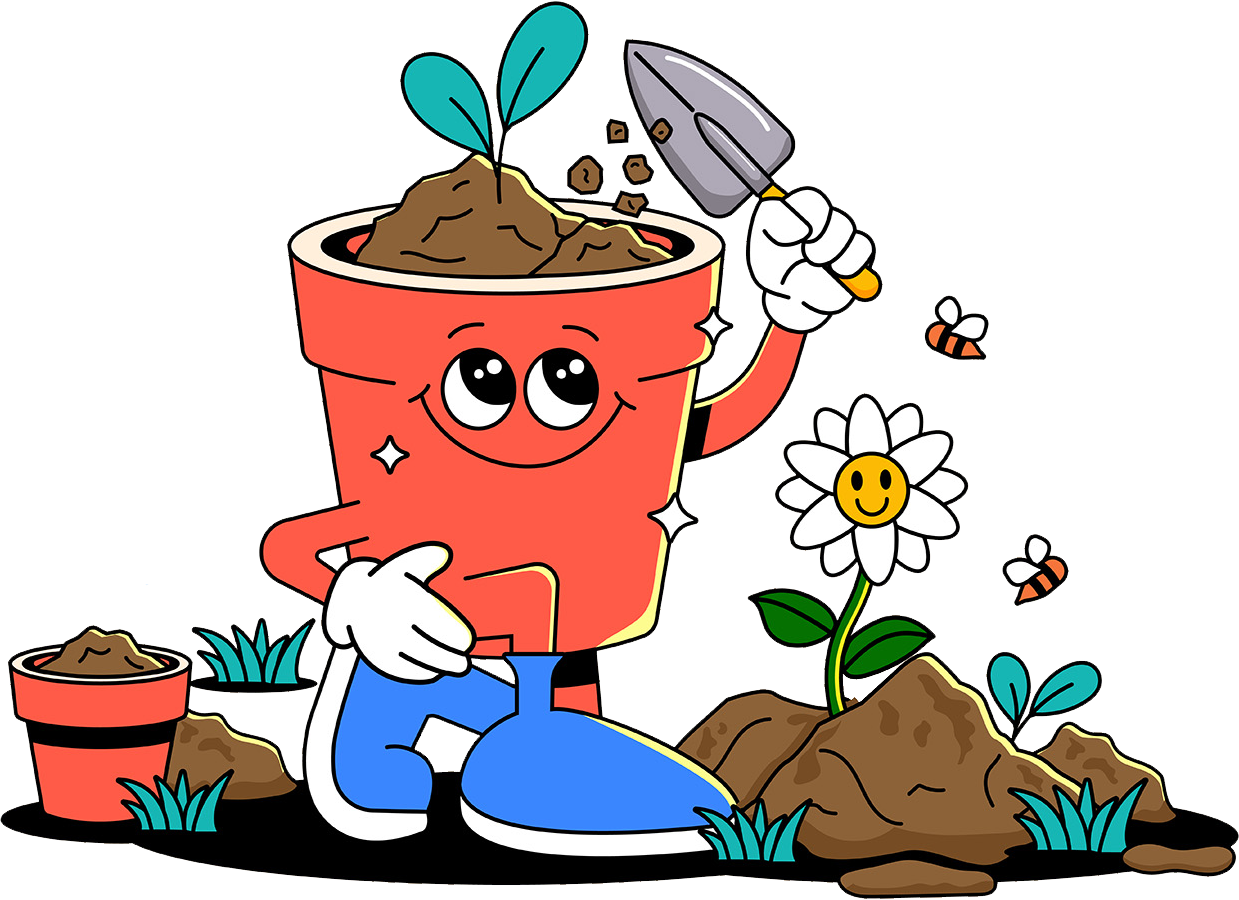Rosemary
FULL SUN
6+ hours of direct sunlight daily
☼ A total sun lover ☼
In lower light conditions, rosemary can become leggy, pale and lose its intense flavor.
In super intense sun or heat, rosemary can suffer from leaf burn or browning. Consider giving it a little afternoon shade on days with harsher sun.
Keep soil dry
This is a drought-tolerant plant
Overwatering rosemary is the fast track to root rot and other issues. Make sure its pot has good drainage and to water deeply, but only when the soil is completely dry!
Rosemary prefers low humidity.
Indoor humidity should be fine as long as it is not crowded with other plants. High humidity or still air can lead to fungal issues.
Rosemary is typically resilient, but if you want to be a little extra - place rosemary in a breezy spot or near a fan to keep conditions flowy and dry.
soil needs
Rosemary digs a dry, sandy, and fast-draining mix that mimics its Mediterranean roots.
When choosing a potting mix for rosemary, look for mixes that include:
ᯓ Pumice ᯓ
Helps with drainage while holding onto a bit of moisture.
ᯓ Perlite or Coarse Sand ᯓ
Improves drainage and prevents waterlogging.
Harvesting
You can start harvesting rosemary when it is about 8 inches tall and is well established with multiple stems.
Try to harvest every 1 to 2 weeks or as needed to prevent it from getting too woody and sparse. Light, consistent pruning also delays flowering and keeps its leaves flavorful.
⊹ Use Clean Scissors or Fingers ⊹
Always use sanitized scissors or pinch off stems with clean hands to prevent spreading germs.
⊹ Identify the Pruning Spot ⊹
Snip away the top few inches of the fresh, green tips. These are the more tender and aromatic leaves, and snipping here will encourage more growth.
⊹ Larger Harvests ⊹
You can cut back into the woodier stem for a longer rosemary sprig. Avoid cutting too close to the base. Just keep in mind that cutting the woody parts can often prevent new growth!
Trimming off the soft, flexible tips is the key to longterm regrowth.
Common Issues
-
A sign of underwatering or shock from sudden temperature change.
If rosemary has been left bone dry for too long, water deeply. Also, some afternoon shade may help in very hot weather conditions.
Feel free to snip off any brown tips for a cleaner and greener look.
-
Likely due to not enough sunlight.
If you notice your rosemary is growing slowly or looking leggy, try moving it to a sunnier spot to soak up more rays.
-
A sign of overwatering. Soil that has been overwatered can lead to root rot and sickly leaves.
Remove affected leaves. Dry out the soil completely.
If the problem persists, remove plant from pot, trim away dead, mushy roots, and repot in fresh soil.
-
Usually caused by high humidity and low airflow.
Avoid misting or overhead watering rosemary to prevent moisture on its leaves. If grown indoors, improve airflow by placing near a fan or open window.
-
Often due to low light, overwatering or aging woody stems.
The keys to flavorful rosemary:
Lots of sunshine
Water when soil is completely dry
Regular pruning
Sometimes issues can be the result of a pest infestation. Make sure to watch out for these creepy crawlers:
𖢥 Aphids
Pet Safe
Rosemary is a non-toxic herb that is considered a safe herb to grow indoors or outdoors in pet-friendly spaces.












